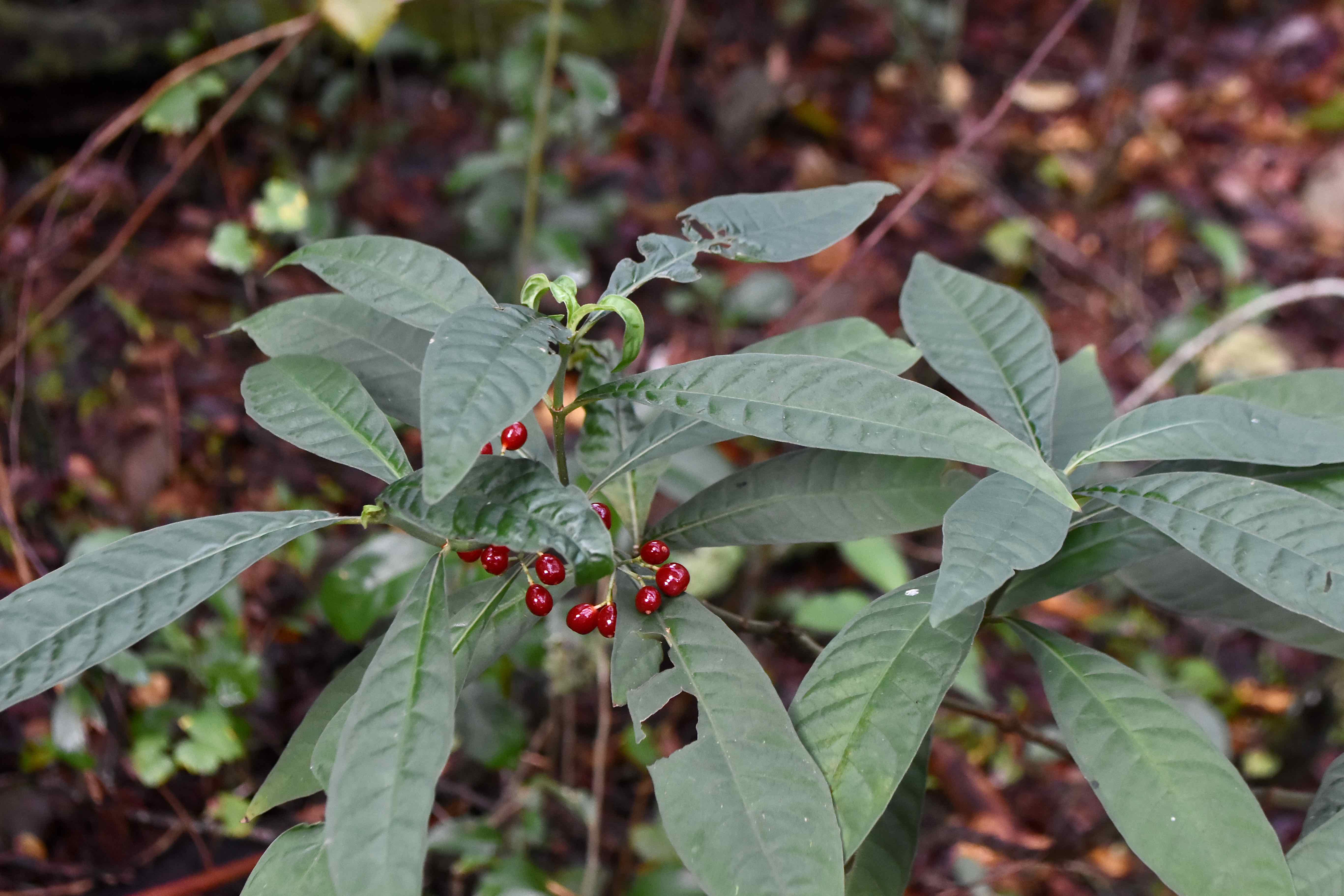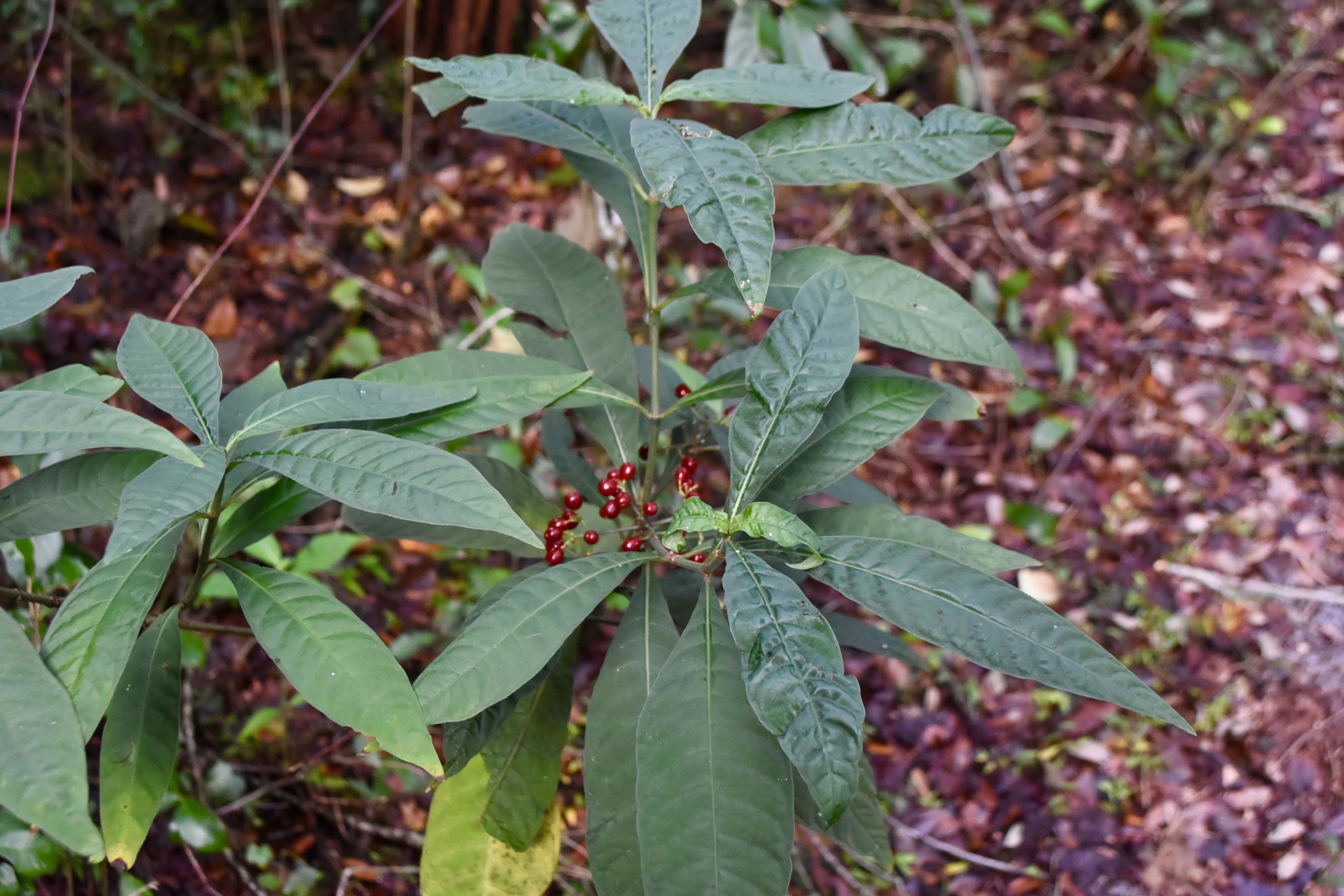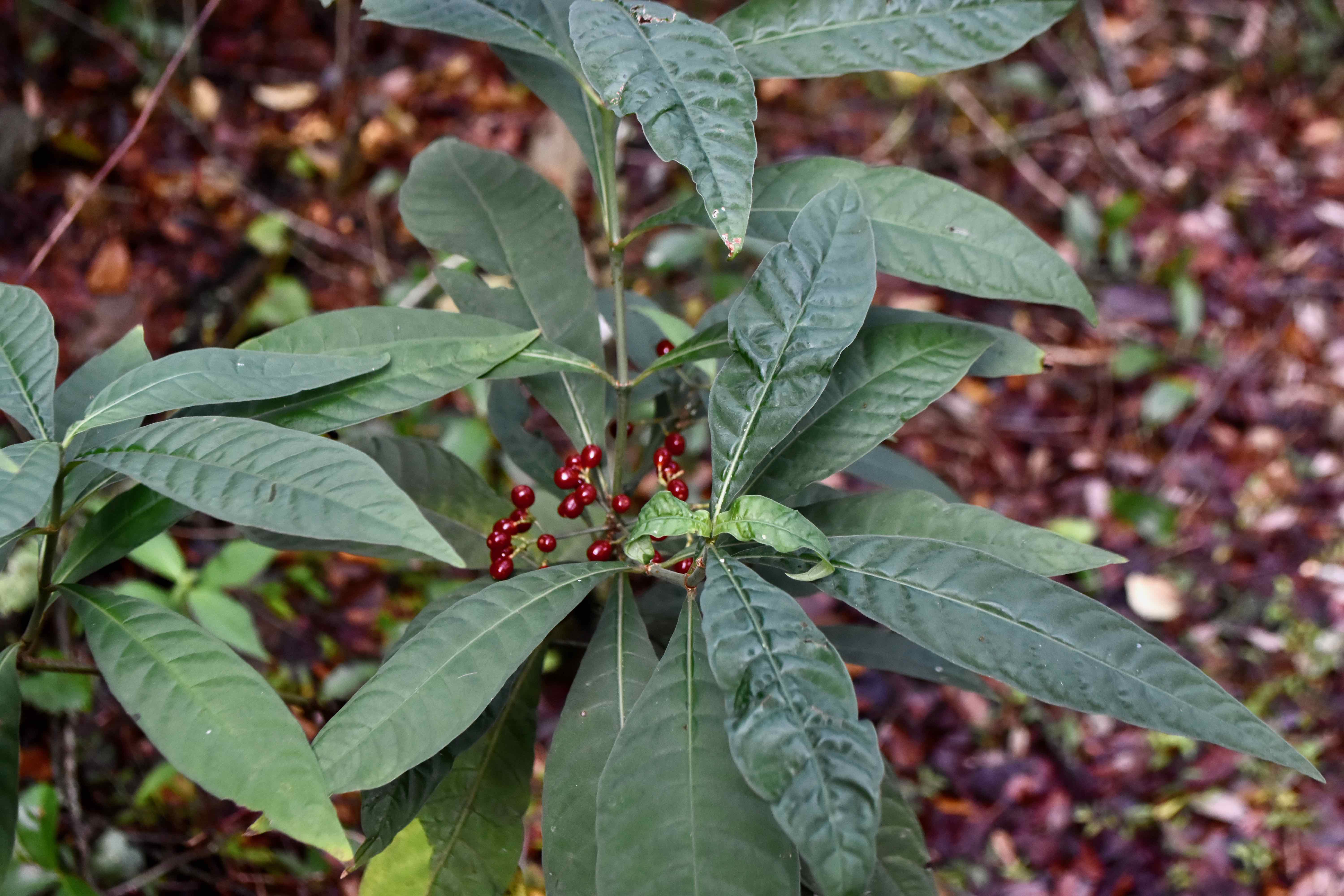
Dull leaf wild coffee, photographed at Prosperity Oaks Natural Area, Palm Beach Gardens, Palm Beach County, in February 2019.
As you might guess by the names, it's the leaves that are the tell when identifying this plant. If you see a wild coffee plant that looks like shiny-leaved wild coffee but lacks the lustre, then it's likely this guy, dull-leaf wild coffee, Psychotria tenuifolia that you're looking at.
The two are similar in most ways, the berries, the flowers, the shape of the leaves. But dull-leaf really is noticeably duller than its cousin. For us, it's the easiest way to tell the two apart. And if you still have any doubts, touch the leaves; they feel much, much different, less slick, more velvety, than shiny-leaved. There is a third native wild coffee in Florida, Bahama wild coffee, but it is rare, limited to the rocklands of Miami-Dade and Monroe counties, and state-listed as endangered.
Dull-leaf wild coffee, AKA shortleaf wild coffee, is a Florida native shrub, found growing in the understories of moist forests and swamps. It grows only in Florida among the 50 states, but its range also includes Puerto Rico and the U.S. Virgin Islands. In Florida, it grows in about two-thirds of the Peninsula, roughly from Volusia County south to the Keys. It's not as widespread as shiny-leave wild coffee, but it's far more common than Bahama Wild Coffee. Its range extends through the Caribbean, Mexico, Central America and South America to Brazil.
As we said above, dull-leaf wild coffee is similar in many ways to shiny-leafed wild coffee. They're both medium-sized shrubs, growing to about three or four feet tall; some put the maximum at six feet instead, arguing that shorter plants encountered most likely have been cut to keep trails clear. It puts out clusters of small white flowers that eventually produce green, then red, then dark red berries, each with a small, single seed inside. Dull-leaf berries are smaller than shiny-leafed's.
The leaves are simple, long, oval shaped and arranged along the stem in opposite fashion. They are thinner than shiny-leaved wild coffee and less prominently ribbed, which accounts for their different texture. (The scientific name for shiny-leaved wild coffee, Psyschotria nervosa, comes from the prominent veins.) They're used similarly in landscaping, as accent plants, hedges and barriers. They take to lightly shaded places, have little tolerance for salt water but are moderately drought tolerant, though they should be kept moist. Dull-leave wild coffee blooms all year, but peaks in spring and summer. The fruit is food for birds and other animals; the flowers provide nectar for the atala, Julia, great southern white and Schaus swallowtail butterflies. The shrub itself provides cover.
Can you make coffee from this wild coffee? The answer, like that for the other two Florida wild coffee natives, is an unqualified (and emphatic) no. The berries are considered inedible, and if you do try to make a beverage from them, it A) won't taste like coffee B) in fact will taste terrible and C) will totally lack a caffeine kick. The stuff you get at your favorite coffee shop comes from Coffea arabica, so it's not even in the same genus. The difference is so great that we've seen some question why they're even called coffees.
By the way, there are some 2,000 species in the genus Psychotria. The name means "endowed with life" and refers to the medicinal properties of some of its members. All three of Florida's wild coffees are members of Rubiaceae, the coffee family. Other common names for our guy: dull wild coffee, Sulzner's wild coffee, velvet-leafed wild coffee, short-leaved wild coffee and shortleaf wild coffee. Short-leaved and shortleaf are frequently used, but we think dull-leaved better captures the tell-tale difference between it and its cousin, shiny-leaved wild coffee.
Click on photo for larger image
Links for Dull-Leaved Wild Coffee



